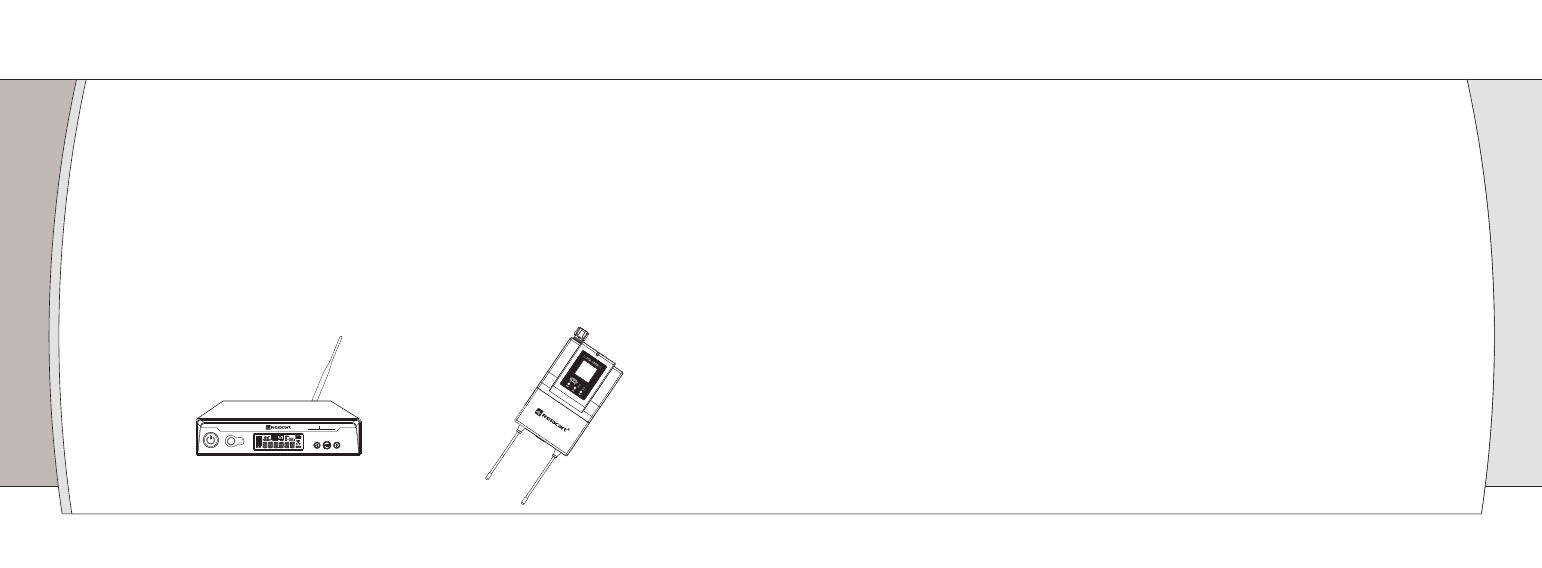Relacart Electronics PM-160 User Manual
Page 3

P3
P4
01
02
Wir ele ss In -ea r
Mon ito r Sys tem s
PM-16 0
mo ni to r
①EIA-standard metal materials half - rack transmitter chassis.
②All the receivers offer durable, ergonomic metal bodies, soft-touch controls.
③UHF frequencies and Antenna Diversity reception for interference-resistant operation.
④Bandwidth 16MHz, 32 pre-programmed frequencies available.
⑤Selectable stereo or mono audio output.
⑥High-visibility white LCD information display
⑦ PLL (Phase Lock Loop frequency control) design ensures transmission reliability, "Noise
Lock" squelch effectively blocks stray RF.
⑧ Designed for use on performance, broadcast, big meeting as side-ear systems for
synchronous translation.
Introduction
Transmitter Installation and Connections
Installation
① For better operation the transmitter should be at least 3ft. (1m) above the ground and at least 3ft. away
from a wall or metal surface to minimize reflections.
② Keep antennas away from noise sources such as computer, digital equipment, motors, automobiles and
neon lights, as well as away from large metal objects.
③Attached a UHF antenna to the antenna input jacks, the antenna are normally positioned in the shape of a
“V” (in 45°from vertical) for best transmission.
④Keep open space between the receiver and transmitter for better reception.
⑤The transmitter should be at least 6ft. (2m) from the receiver.
Connections:
① The switching power supply is designed to operate properly from any DC power source 12V, 500mA
without user adjustment. Simply connect the transmitter to a standard DC power outlet, using only an IEC-
type input cordset approved for the country use. Power to the unit is controlled by the front panel power
switch.
②There are two audio inputs on the rear panel: 1/L and 2/R audio INPUTS. It is suitable for an XLR balanced
audio input connector and a 1/4” (6.3mm) unbalanced phone jack input connector. The two audio inputs
permit simultaneous feeds from two different outputs. Use the appropriate shielded audio cable for
connections between the transmitter and the output(s) of the mixer or other audio output equipment.
:
